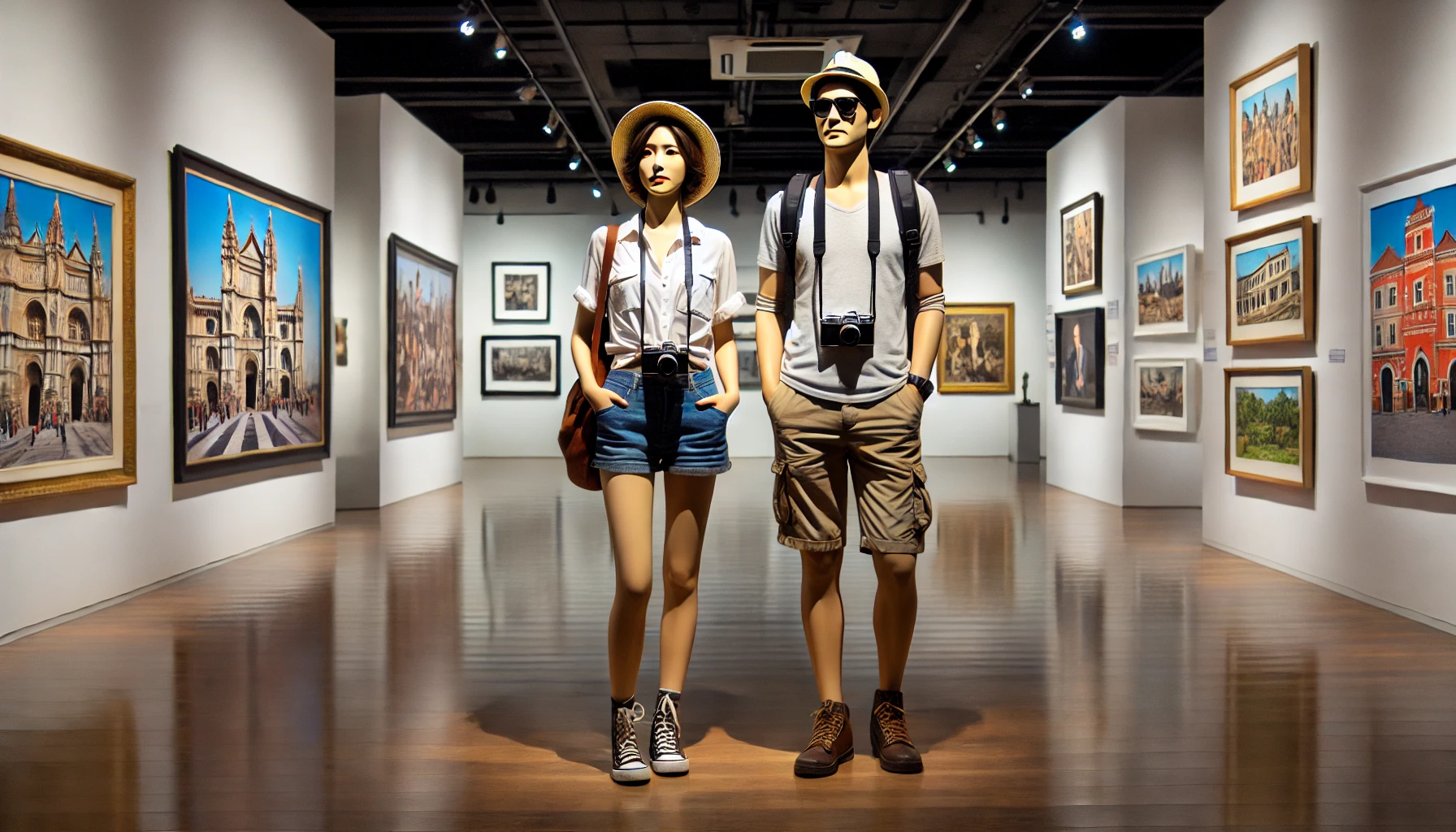Hyperrealism, which aims to create realism so realistic that people freak out when they see a couple dressed as immobile tourists in an art gallery, is a critical expression of capitalist everyday life that, unlike Pop Art, strives for both realism and realism. Through the work of its leading artist, Duane Hanson, this school of thought sheds light on consumerism and materialism and makes us reflect on modern society.
If you see a couple dressed as tourists standing motionless for a long time in an art museum, people will take a second look. And when they realize it’s a work of art, they’ll be surprised. This school of thought, which recreates something that exists in reality so that it can be believed to be real, is called hyperrealism.

Hyperrealism is an art movement that developed from the late 1960s to the early 1970s and aims for photorealistic precision. Artists often choose scenes from everyday life and try to recreate them as if they were right in front of you. Hyperrealist works often leave a deep impression on the viewer because they challenge human visual perception, which transforms the artwork into a medium that invites interaction with the viewer rather than just an object to be admired.
Realism is said to be high when the subject matter is something that is commonly seen around us, such as tourists, and realism is said to be high when the subject matter is represented as if it were real by relying on visual representation. Hyperrealism, which pursues both the realism of the object and the realism of the expression, can be characterized by comparing it to Pop Art, which is also in the same realism trend. Both of these movements, which developed in the United States in the 1960s and are still in vogue today, have in common the fact that they targeted everyday life in capitalist society at the time. While Pop Art implicitly transformed the object, Hyperrealism sought to reproduce the object exactly. Therefore, while Pop Art mainly pursues the realism of the object, Hyperrealism pursues not only the realism of the object but also the realism of the expression, continuing the flow of trompe l’oeil. While Pop Art mainly utilized print media for easy communication with the public rather than accurate reproduction of objects, Hyperrealism actively used new materials and mechanical methods to accurately reproduce objects.
The development of hyperrealism is also strongly related to the social and economic context of the time. The 1960s and 1970s were a time of economic prosperity and consumerism in the U.S. This gave people a new perception of the real world, which was reflected in art. Hyperrealist artists sought to criticize consumerism and materialism through visual representations that went beyond photographic accuracy, or, conversely, to explore the human psychology and social phenomena behind them.
Duane Hanson is a representative artist of hyperrealism who realistically depicts everyday life in capitalism. His work “Woman Pushing a Shopping Cart” (1969) can be interpreted as a critical look at modern people living in the midst of material abundance. The objects of the work are a shopping cart full of goods and a woman. She is the subject of desire and symbolizes greed for material things, and the shopping cart full of goods is the object of desire and symbolizes material things. Therefore, the composition in which the woman is pushing a shopping cart that is overflowing with goods shows the tendency of excessive consumption in the midst of material abundance.
In terms of the technique of this work, the work is made without a display base so that it can be displayed naturally in a living space. Instead of using a mold made from clay after seeing a human figure, the artist used a realistic mold technique that directly adds plaster to the human figure to reproduce the shape and size of the human figure. Also, instead of using bronze metal, which is the material of conventional three-dimensional works, the artist used synthetic resin, polyester, fiberglass, and painted with an airbrush to reproduce the texture and color of human skin. To this, he added objects such as wigs, necklaces, and clothing, and used shopping carts, groceries, etc. to enhance realism.
The main purpose of realistic art is to capture reality and communicate it effectively. There are many ways for artists to convey the reality they capture. Realist artists, such as hyperrealism and pop art, communicate reality in their own way by reproducing or implicitly transforming objects to communicate with the viewer. This goes beyond mere visual satisfaction, and gives viewers a chance to reflect on their own society and times. Hyperrealism’s precise depictions and Pop Art’s iconic expressions ultimately give us the opportunity to see different aspects of reality in a new light.
 I’m a blog writer. I want to write articles that touch people’s hearts. I love Coca-Cola, coffee, reading and traveling. I hope you find happiness through my writing.
I’m a blog writer. I want to write articles that touch people’s hearts. I love Coca-Cola, coffee, reading and traveling. I hope you find happiness through my writing.